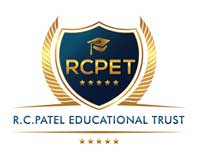Innovative Teaching Methods
In our Department the more innovative, interactive and collaborative way of learning has been introduced interactive panels of Senses that have so many applications for learning. With a constant demand for quality education, students face unique challenges that require innovative approaches to teaching. The aim is to provide students with insights into the strategies that can help improve the overall quality of education.
A smart classroom is upgraded classroom that enhances the teaching and learning process for both the teachers and the students by inculcating audio, video, animations, images, multimedia etc. It is beneficial for teachers and students since teachers get an entire platform to pick information from and teach instead of just being restricted to a book. Students pay more attention in class and find studying fun. Innovative methods improve the understating of basic concepts, encourage deep and creative learning, and develop teamwork and communication skills.
Some innovative approaches:
1. Interactive Multimedia Resources
Incorporating interactive multimedia elements such as 3D animations, videos, and virtual reality experiences can make abstract mathematical processes more visual and tangible. These resources engage students and facilitate better comprehension of complex topics.
2. Flipped Classroom
In this model, students learn new content at home through videos or readings, and class time is used for discussions, activities, and hands-on projects. This flips the traditional lecture-homework dynamic and allows for more personalized instruction.
3. Technology Integration
Leveraging technology such as virtual reality, augmented reality, interactive whiteboards, and educational apps can enhance teaching and learning experiences. These tools can make abstract concepts more tangible and provide opportunities for active learning.
4. Project-Based Learning (PBL):
This method involves students working on projects that require them to investigate and solve real-world problems. It promotes critical thinking, collaboration, and application of knowledge.
5. Peer Teaching and Collaborative Learning
Encouraging students to teach each other can be a powerful learning tool. Group work, peer tutoring, and collaborative projects promote communication skills, teamwork, and a deeper understanding of the material.


